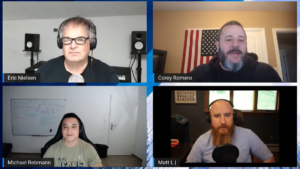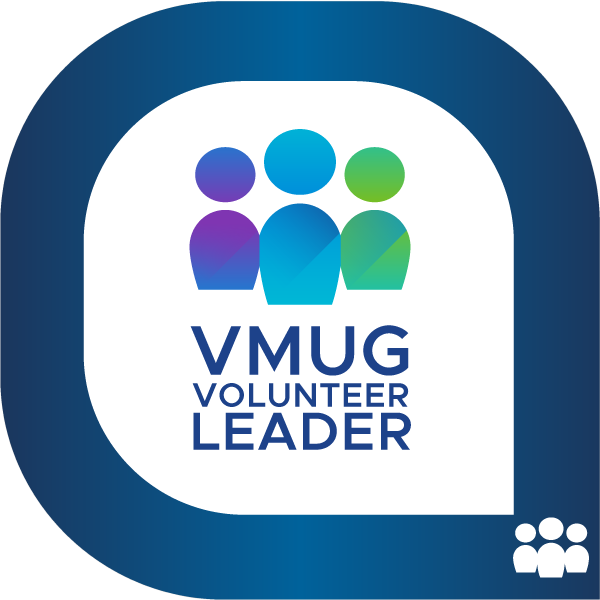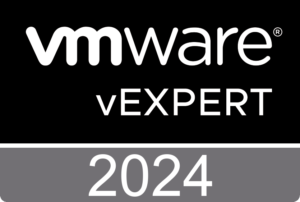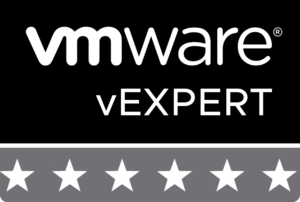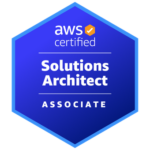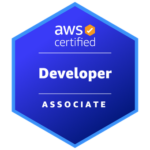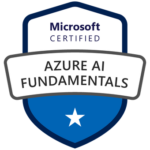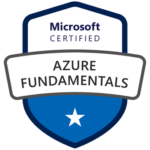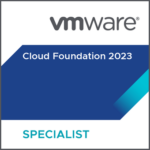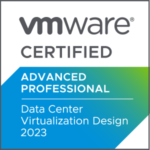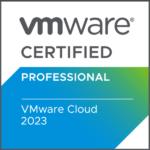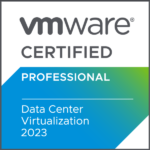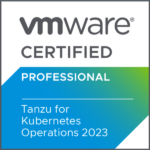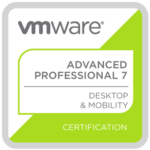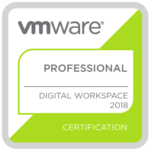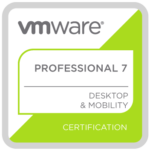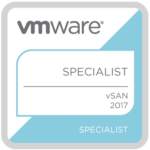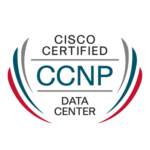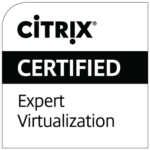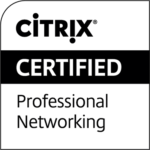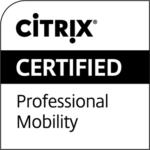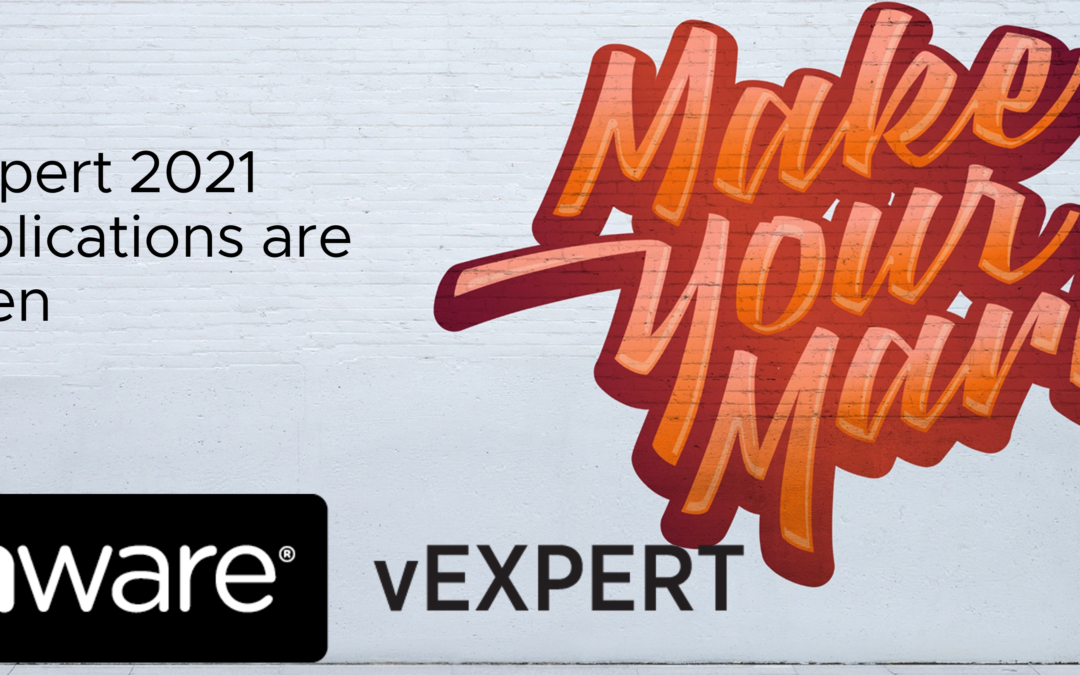
How becoming a VMware vExpert changed my life
Most people think they are just like everyone else – I was also one of them. Let me share my story about becoming a vExpert and tell you, that this perception of “like everyone else” is wrong. I had to learn that as well.
In 2012, I started to work for a small VMware Cloud Provider Partner (VCPP) in Switzerland, was the 7th employee and the second one in the cloud engineering team. My role included the administration and operation of a data center environment which consisted of:
- vCloud Director 5.x
- vSphere 5.x
- Citrix XenApp/XenDesktop
- Cisco UCS
- Cisco Switches and Routers
- Dell EMC Storage and Backup
Back then I designed and deployed Windows environments mostly on terminal servers so customers could connect to their IaaS-hosted offerings via RDP. After a while we improved this service offering with Citrix on top, because we suddenly had new larger customers with different requirements and the company I worked for had to be innovative and think about new offerings and services.
Besides that, I also configured several Cisco routers and switches at the customer sites. Not only for the inhouse connections, but also for the VPN connection to the data center, where their hosted infrastructure was hosted.
I never realized until a few months ago, that I already built some cool hybrid clouds in 2012!
As you can imagine, since we were only 2 people maintaining a lot of customer environments and our own infrastructure at the same time, we had a lot of knowledge and responsibility! But it was fun, and also the employer where I gained the most knowledge and experience.
I would say that this employer and the experience I gained during my 3,5 years there were such an important part of my career, that I could work for Citrix a few years later, then join VMware and become a vExpert as well.
I remember that I said, while still working for the VCPP partner, that I want to work for VMware one day, but it’s most probably just going to be a dream.
Fun Fact: You have to imagine that I held several Cisco certifications (CCNA and CCNP), but was so afraid to fail the VCP5-DCV exam back then.
And today I’m going for my triple VCP badge and hope to get my first VCIX at the end of January 2021! 😀
Since I worked at this small VCPP partner, I always wanted to blog about the stuff I’m doing or had to build for customers. About the special use cases or configurations I had fulfilled.
Decision to become a VMware vExpert
I joined VMware in May 2018 as a pre-sales solution architect focusing on EUC (end-user computing) topics, because I came from Citrix. The responsibility of this role included to help growing the business of VMware Horizon and Workspace ONE.
But, when the management from Switzerland hired me, I had no VMware EUC knowledge – only Citrix, Cisco and a strong VMware data center background.
So, I was very ambitious, hungry for new knowledge and decided that I could try to earn the VCDX-DTM certification somewhen in the next few years. This idea led me to decision to start blogging three months after I got hired.
I thought “let’s give it a try and if nobody is reading my stuff, I just delete everything one year later”.
Anyway, why should anyone read (or even find) my stuff? There are already so many great bloggers with awesome content out there.
My first articles were about the preparation for my first VCAP (desktop and mobility track) design exam. I wrote about it, because I had to gain a lot of Horizon knowledge and realized, that not many people wrote about this topic so far. And most of the content to that day was outdated.
Until January 2019 I had passed the VCP-DTM, VCAP7-DTM Design and VCP-DW exam. In the meanwhile, I also tried to get familiar with Twitter and tried to be active there. And started to follow the known and famous people from the VMware community including some vExperts.
I had around 200 unique visitors hitting my blog per month and saw that other people were interested in my simple VCAP7-DTM study guide. At the same moment I got notified on Twitter, that the vExpert applications are open again.
At the end of January 2019, 5 months after I started blogging, I submitted my vExpert application with the expectation, that I won’t get accepted. Why have I thought this? Because I was just someone, who started blogging recently, wrote a few okayish articles and nobody knew me. But in March 2019 I had the following email in my inbox:

Benefits of being a VMware vExpert
YES! I couldn’t believe it, but this gave me motivation to write more and better articles. And I felt the pressure now, that I had to deliver new content to keep this status for upcoming years, if I want to re-apply every year. 🙂
I told myself, that I need to write about stuff, which nobody did yet – unique content. How did my visitor counter look like before and after I became a vExpert? They were just going up (from March on) even I didn’t write that much after joining the program:

Benefit 1: Becoming a VMware vExpert helps to you get visibility and more people finding your blog!
Why did my numbers go up starting in August 2019?
I had a customer looking at VMware Horizon, who was evaluating different thin clients. While troubleshooting something in their POC (proof of concept) environment, they asked me, if they would have other options like Dell, Fujitsu or Igel thin clients. Is there a better and even cheaper option?
This question and some research made me order a Raspberry Pi 4 model, which I wanted to test. I wanted to figure out and write about, if the Raspberry Pi 4 could become the ultimate thin client.
It was one simple question, which resulted in an idea for a blog article and then resulted in more visitors coming to my blog.
Until today this article is by far the most successful article with the most hits per month! Suddenly I had pingbacks from other vExperts, people were talking about this article on Twitter and VMware forums as well!
Benefit 2: People recognize your vExpert status (and credibility) and start to mention you on social media
I now had the confidence, that I could write articles, which people are reading. I had proof now.
An unexpected change leads to success
In December 2019 my focus as a solution architect expanded. I got promoted to a “senior” solution architect and moved into a generalist role. This meant, that I started to focus on all VMware topics/products now and got the responsibility for some of the largest and most strategic enterprise accounts VMware has in Switzerland.
This also meant, that I had to learn a lot of new stuff, if I wanted to survive in front my customers and to hold my own presentations and meetings, which also should lead to business growth in the end. Some of the new topics and technologies were:
- VMware Cloud Foundation
- Cloud Management Platform and the vRealize Suite
- Software-Defined Networking with NSX and SD-WAN (Velocloud)
- Kubernetes and app modernization with VMware Tanzu
- Multi-Cloud Architectures and Cloud Migrations
- Security with Carbon Black
The first three months were very challenging. I wanted to learn everything very fast to become a trusted advisor and to prove, that I am worthy and the promotion and role change were no mistake.
In my opinion, the best way to demonstrate or prove something is to write or to talk about it. So, in 2020 I started to write about new technologies, included my own words and new angles when publishing or pitching something:
- Cross-Cloud Mobility with HCX
- VMware Cloud Foundation And The Cloud Management Platform Simply Explained
- Multi-Cloud Load Balancing and Autoscaling with NSX Advanced Load Balancer (formerly Avi Networks)
- Multi-Tenancy on VMware Cloud Foundation with vRealize Automation and Cloud Director
The role change and my new focus made it possible, that I could write about topics, which were relevant for more people. Not only the technical people anymore, but also decision makers and in general less technical people.
Why do I mention these articles? Because I consider them as a huge personal success. Three of the four above articles were shared on the official VMware social media accounts on Twitter, Facebook and LinkedIn. I got a decent amount of likes and re-posts (between 70 and 300 times)! These are two examples from LinkedIn:


Benefit 3: Your articles or posts get shared on social media by VMware. Suddenly a new level of reaching people, which also brings a lot of visibility for you!
You can imagine how I felt after this happened. I was a surprised and impressed, that there is interest for my content. I received a lot of great feedback on Twitter, LinkedIn and via e-mail.
Did I mention that I even was invited to the VMware Community Podcast? You can do that too! 🙂
It’s not about bragging, but I realized something very important, which is another benefit as well:
Benefit 4: You can have an impact on people lives and decisions.
May it be a VMware partner, who now has a better understanding how to explain some topics to their prospects or customers in a different way. There are customers, who understand the huge VMware portfolio and the strategy behind it a lot better. And there are colleagues within VMware, that are contacting me from different places on this planet and thanking me for my contributions.
Benefit 5: People are thankful for your content and the information you share with others.
Apply for the vExpert Program
I worked in a small company, which became the most important milestone in my career before I joined VMware and became a vExpert.
Never believed, that I could be successful and that other people would listen to me or read about what I have to say. My story should be proof enough, that anyone can contribute and make a mark. And what was between me and where I stand today as a vExpert?
Benefit 6: Higher confidence and believe more in myself.
The decision to start a blog to share information.
If you already share or want to share your knowledge and views which are related to VMware, then please apply for the vExpert program. If you are a current vExpert, please don’t forget to reapply.
Don’t miss out on the opportunity, be sure to apply before January 9th, 2021. The vExpert awards will be announced on February 19th, be a part of the announcement!
Benefit 7: It is fun to share, and it gives you a great feeling.
Other vExpert benefits can be found here.
How are my website stats looking today after two years and the help of social media?

Contact me on Twitter or LinkedIn, if you need help with your vExpert application!
PS: I had the idea two write this article three weeks ago and removed it on my to-do list on Monday, because I thought nobody would be interested. I woke up a little bit earlier today than expected and said to myself:
If my story results in at least one more person, who wants to start blogging or even become a vExpert, it was already worth it. And I truly believe in that after what I experienced the last two years! 🙂
Again, it was only the decision between me and writing this story.
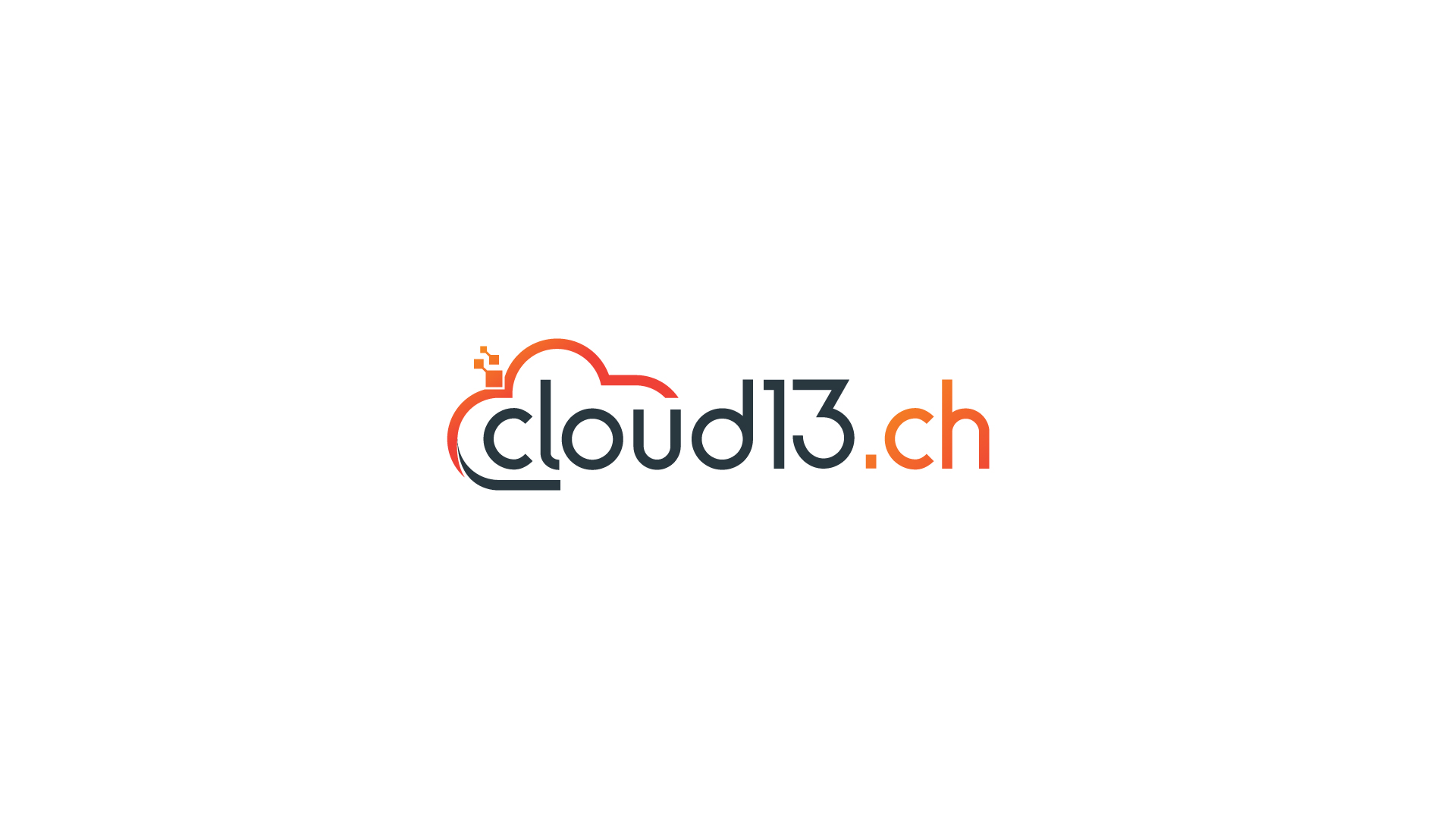
 If you need to write down use cases and their attributes, here an example:
If you need to write down use cases and their attributes, here an example:














